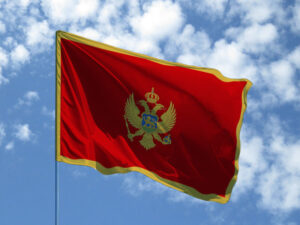
According to Serbian Economist, Montenegro will cancel visa-free entry for Russian citizens and introduce a visa regime by the end of the third quarter of 2026 as part of the harmonization of visa policy with the rules of the European Union.
“In accordance with the commitments undertaken by Montenegro on its path to full membership in the European Union, the country must fully harmonize its visa policy with the EU policy by the end of the third quarter of 2026. This includes, among other things, the introduction of a visa regime for Russian citizens,” the commentary reads.
Russian citizens can now enter Montenegro without a visa and stay in the country for up to 30 days under a bilateral agreement.
According to the national statistical service Monstat, in 2023 Montenegro was visited by about 247 thousand tourists from Russia, which provided 24% of all overnight stays of foreign guests; in 2024 their share amounted to 18.3% with a total flow of 2.6 million tourists. According to the Ministry of Internal Affairs of Montenegro, about 20 thousand citizens of the Russian Federation with temporary or permanent residence permits are officially registered in the country.
Thus, the tightening of the visa regime will potentially affect annually hundreds of thousands of tourist trips and tens of thousands of Russians living or regularly vacationing in Montenegro. Experts expect that part of this flow will be reoriented to other visa-free or easier destinations for Russians – primarily Turkey, Egypt, UAE, Serbia and a number of Asian countries.
https://t.me/relocationrs/1822
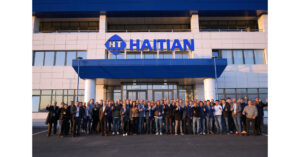
According to Serbian Economist, Chinese company Haitian International is launching pilot production at its new plant in Ruma (Vojvodina, Serbia), creating one of the largest production complexes in the region.
The project involves the construction of a factory with an area of up to 250,000 m² in the Rumska petlja industrial zone.
The initial phase includes approximately 59,000 m² for a production building, office building, and canteen. During the pilot phase, it is planned to produce up to 2,500 Mars and Jupiter series injection molding machines per year.
The total investment is estimated at around €100 million. In the first phase, the plant will employ about 300 people with salaries ranging from €650 to €1,000.
The city administration of Ruma and the Serbian government noted that the project will make a significant contribution to regional industrial dynamics and create new jobs. The plant will enable the Chinese investor to reduce logistics costs and serve the markets of Europe, the Middle East, and India more quickly.
The Serbian authorities consider the Haitian project to be strategic for the industrialization of Vojvodina and strengthening the inflow of foreign investment. The launch of pilot production in Ruma will strengthen Serbia’s industrial cluster and create the conditions for further technological investments.
Haitian International is a major Chinese manufacturer of injection molding machines, presses, and automated equipment. The plant in Ruma will be the company’s first significant production base in the Balkans.
https://t.me/relocationrs/1810

According to Serbian Economist, Serbia and Ukraine are intensifying cooperation in agriculture, trade, and technology exchange.
The Serbian side confirmed its interest in expanding imports of Ukrainian agricultural products, especially corn, wheat, oilseeds, and semi-finished products for the food industry. At the same time, they discussed increasing supplies of Serbian goods to the Ukrainian market, including meat, dairy products, feed, and planting material.
According to the Serbian Ministry of Agriculture, Kyiv and Belgrade are considering the possibility of creating joint logistics corridors that would allow them to bypass existing transit restrictions and speed up the movement of goods between the countries. Special attention was paid to the topic of plant protection, veterinary standards, and simplifying certification procedures for producers in both countries.
The parties also noted the potential for cooperation in the development of digital agriculture and agrotechnologies. Ukraine offered Serbian companies an exchange of practices on the use of drones, remote monitoring systems, and AI analytics to optimize agricultural production. The Serbian delegation, in turn, expressed its willingness to share its experience in organic farming and agricultural raw material processing.
During the meeting, the prospects for Serbian companies’ participation in programs to restore Ukraine’s agricultural infrastructure, including the modernization of grain storage, processing facilities, and logistics, were also discussed.
The negotiations are taking place against the backdrop of growing trade turnover: in recent years, the volume of bilateral trade in agricultural products has shown steady growth, and Serbia is becoming one of Ukraine’s key Balkan partners in the region.
The next meeting of the relevant ministries is expected to take place in early 2026, where the parties plan to present a roadmap for deepening cooperation in the agricultural sector.
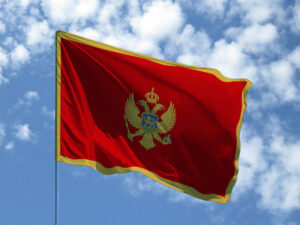
According to the Serbian Economist, Montenegro will soon tighten the visa regime for Russian citizens, bringing it in line with the rules of the European Union. This was announced by the Prime Minister of the country Milojko Spajic.
According to the head of the government, Podgorica intends to fully harmonize visa policy with the EU, which means the abolition of the current order allowing Russians to stay in Montenegro up to 30 days without a visa. Spajic emphasized that the measures will be introduced “very soon” and are part of the course to accelerate European integration and achieve EU membership by 2028.
Russian citizens can now freely enter the country for short periods of time without a visa, which has led to a significant increase in the number of tourists and re-locations from Russia in recent years. Once the regime is tightened, entry will require a visa at consular offices, similar to Schengen rules.
How many Russians now reside in Montenegro
According to official data from the Ministry of Internal Affairs of Montenegro, at the beginning of 2024-2025 in the country officially registered about 20 thousand citizens of Russia with a temporary or permanent residence permit. This makes Russians one of the most numerous foreign communities in the small 600-thousand-strong state.
In addition, according to the calculations of tourism and migration services, several thousand more Russians are in the country without long-term statuses – on tourist stay, on business grounds or in the process of registration of residence permits.
Prime Minister also recalled that Montenegro had previously tightened visa rules for citizens of Armenia, Uzbekistan, Kuwait and Egypt within the framework of adapting visa policy to EU standards. Podgorica fully follows the general foreign and defense policy of the European Union, including sanctions and visa restrictions against Russia.
Observers attribute the upcoming changes to pressure from Brussels following the tightening of the EU visa regime for Russians, as well as Montenegro’s desire to reaffirm its commitment to the European course against the backdrop of membership negotiations.
https://t.me/relocationrs/1792
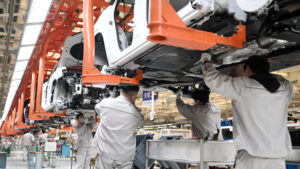
According to Serbian Economist, the Chinese company Techron Automotive plans to build its first foreign plant for the production of plastic car components in the city of Inđija (Vojvodina, Serbia), which will strengthen the country’s role as a regional hub for the automotive industry. This was announced by the Municipality of Inđija, as cited by Serbia-business.eu.
The construction is planned to start by the end of this year. According to the published information, the plant in Indjija will be the first Techron plant outside China. At the first stage, the construction of a 4.5 thousand square meters production building is envisaged. After reaching full capacity, the enterprise will be able to provide about 200 jobs.
The plant is scheduled to open in mid-2026.
Techron produces components for the world’s leading automakers – Volkswagen, Porsche, Audi, Chery, Geely and others. The product line includes engine and transmission parts, interior and exterior components, as well as control system components.
Experts note that the project fits into Serbia’s strategy of deepening specialization in the automotive industry and automotive components: dozens of plants for the production of harnesses, electronics and plastic parts for European and Asian brands are already operating in the country. For the region, this means not only new jobs, but also the need to invest in energy, logistics and vocational education in order to consolidate the effect of the new investor.
https://t.me/relocationrs/1782
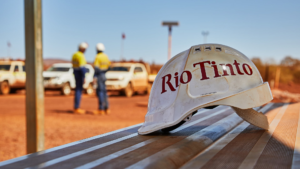
Rio Tinto Group has mothballed its $2.95 billion Jadar lithium project in Serbia, Bloomberg reported, according to the Serbian Economist.
The project will be transferred to “care and maintenance” mode in accordance with plans to simplify Rio Tinto’s asset portfolio and focus on more interesting opportunities in the short term, the document said.
A company spokesman confirmed to the agency the decision to mothball Jadar, which has large lithium-rich ore reserves.
The project, which never reached the production stage, faced many problems. The Serbian government has repeatedly changed its position on the issue of granting permits to develop the mine, which was strongly opposed by local communities.
“Given the lack of progress on the issue of permits, we can no longer maintain the previous level of expenditure and resource allocation,” the document said.
https://t.me/relocationrs/1742